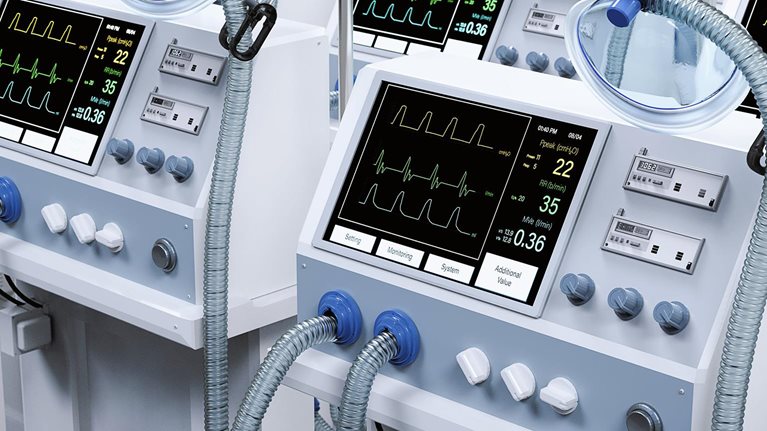Technological advancements have enabled a fundamentally new way of delivering quality. Pharma and medtech companies now have the unique opportunity to implement an approach that goes well beyond execution and compliance.
Imagine a quality system that:
- tells companies when and how their customers’ needs evolve
- creates more capacity in the whole organization by automating data collection, analysis, trending, and reporting—so designers can design, engineers can build, and salespeople can sell
- embeds compliance within flexible, user-friendly, organically built business workflows
- naturally fulfills the spirit—not only the letter—of the regulations
Realizing such a vision would require a paradigm shift from treating quality compliance as part of the cost of doing business to establishing quality as an enabler of enterprise value creation. A “smart quality” framework, which combines advanced technologies, modern process design techniques, and flexible ways of working, can help companies reimagine the way quality works—and at a fraction of what it used to cost even five years ago.
In our experience, a smart quality system could have a tangible line-of-sight impact on profit, accelerate time to market by more than 30 percent, and increase the capacity and responsiveness of manufacturing and supply chain by 20 to 30 percent. Beyond these directly measurable benefits, a smart quality approach would cause the entire organization to take ownership of quality, empower employees, boost customer satisfaction, and reduce compliance risk.
The current quality landscape
For decades, pharma and medtech executives have viewed quality compliance as the cost of doing business because it usually works behind the scenes, staying mostly invisible to customers and the organization unless disaster strikes. In a self-fulfilling prophecy, the function has traditionally operated as such—focused on compliance as the baseline with cost reductions as the variable objective, albeit with some efforts to give greater emphasis to a customer focus and prevention. In some cases, companies have approached quality with a policing mentality, shaping quality systems and processes with the primary goal of satisfying regulators and catching nonconformances.
As a result, quality compliance has been under nearly constant pressure to reduce costs, in line with most other overhead functions. When cost pressures increased during and after the Great Recession, year-over-year budget-reduction targets became, in many cases, the quality function’s sole success metric. The fulfillment of compliance requirements was often seen as a given. However, such approaches have further obfuscated the quality-compliance system’s true cost to the enterprise: for years, it has constrained innovation, amplified uncertainty and extended lead times in supply chains, distracted salespeople from focusing on customers, and driven overall frustration across the organization with perceived bureaucracy and low-value-added work.
Unsurprisingly, as new digital technologies offer boundless opportunities, most companies have applied them solely to further reduce directly identifiable costs. Solutions have emerged for paperless workflows, automated data pulls and visualization, and artificial intelligence to search unstructured data. Still, the focus has remained on addressing the overall budget of the quality-compliance organization function and achieving clearly measurable cost reductions, ideally within the same fiscal year.
This mindset has been standing in the way of taking full advantage of the real opportunity at hand—using speed, data, and connectivity to improve product quality, process reliability, and ultimately, efficacy and patient safety.
As a result of the one-sided view of quality compliance, the big picture has remained the same over the past two decades: overcomplicated requirements and reactive processes and systems that slow down the business and increase cost.
Charting a new course
Over the past five years, a new way of thinking about quality has emerged. Through our work with clients on several large-scale, global quality-transformation projects, as well as regular dialogue with many functional and enterprise leaders, we have defined an approach we call smart quality.
Smart quality builds on the existing objectives of unconditionally delivering on patient safety and regulatory requirements at the lowest-possible budget. However, it achieves these objectives in new ways and expands their scope by reframing the role of quality in the modern enterprise.
Quality is a value-added partner and coach that helps integrate compliance into regular operations while enabling speed and effectiveness.
Smart quality’s explicit objectives include the following:
- perceiving and delivering on multifaceted and ever-changing customer needs
- deploying user-friendly processes built organically into business workflows, reimagined with leading-edge technologies
- leapfrogging existing quality management systems (QMSs) with breakthrough innovation, naturally fulfilling the spirit—not just the letter—of the regulations
The new ways in which smart quality delivers on its objectives can be categorized in five building blocks (Exhibit 1).

Exhibit 2 shows select examples of how new technologies could reshape what day-to-day quality work looks like across the entire value chain.

Creating value across the entire enterprise
Pharma and medtech companies that adopt smart quality and incorporate technology into each step of the process can free up business resources to focus on higher-value tasks.
- R&D engineers can gain more time for innovation and product improvement as smart quality streamlines and integrates compliance documentation and uses data to make decisions, thereby reducing the compliance burden.
- Optimized quality control plans, deviation and nonconformance prevention, and rapid issue resolution can all accelerate production and release cycle times.
- Sales teams, armed with new digital tools and real-time insights from complaints and vigilance, can shift their attention from troubleshooting to engaging with customers.
- All employees can become more engaged in supporting quality, as relevant data is easily accessible and quality-compliance requirements, systems, and processes are more intuitive and user friendly.
Furthermore, the disruption caused by the COVID-19 pandemic has caused many organizations to embrace the fundamentals of a more proactive approach to quality (see sidebar, “How the pandemic has accelerated the shift to smart quality”).
Companies that have adopted smart quality have demonstrated that its direct impact on quality improvement surpasses traditional business cases. For example, smart quality has enabled organizations to reduce their total cost of quality assurance by up to 50 percent. Each of the building blocks has its own application areas to generate value (Exhibit 3). As more of the building blocks get implemented, the impact compounds.

Here are representative case examples for each of the building blocks:
Smart quality controls: A pharma company with multiple labs used an advanced-analytics digital-twin solution to dynamically optimize scheduling in the labs. The scheduling model relies on a continuous feed of production and lab data to automatically generate an optimized allocation of resources such as equipment and employees. Historical data is used to analyze variability and update standard times. This solution helped the pharma company allocate the workload properly among its labs. The solution has improved productivity in already well-performing pharma manufacturing labs by 40 to 50 percent.
Smart quality assurance: A medtech company used digitization and automation to enhance customer experience, identify and address quality signals faster, and reduce the cost of complaint management by more than 25 percent. The redesigned intake process has allowed the company to link the known issues and their respective safety risks, structure and automate the intake process and customer response for all complaints, and eliminate manual processing for more than 50 percent of complaints. Customer experience has been enhanced through an online complaint-submission application, real-time feedback, and decreased need for follow-ups and return handling. The quick escalation of high-risk complaints and automated trending have reduced patient risk by allowing rapid response to address emerging issues, fulfilling the true spirit of the regulatory requirement for complaint trending.
Process and product mastery: A pharma company used custom advanced analytics to reduce deviations by more than 65 percent. This solution has since helped the company monitor trends, find and eliminate several root causes of recurring deviations that had been impossible to detect with traditional tools, and take preventive action before issues occur. It has also developed a feedback loop with product development teams to improve the robustness of products and processes. The company can now identify the underlying drivers of quality control-test variability and simulate their effect on product properties, enabling product and process mastery.
Would you like to learn more about our Life Sciences Practice?
Smart-quality ways of working: A healthcare company automated data collection, analysis, and visualization for its quality management review to improve depth of insight and accelerate cross-functional decision making. The company has redesigned the structure of its quality performance management and reporting to incorporate a modernized set of metrics for operational performance, quality systems, culture, cost, and compliance. This deep redesign of the metrics has allowed the company to perform comprehensive decision-oriented quality reviews at all levels across functional and geographical entities—such as R&D centers, suppliers, manufacturing sites, distribution centers, and country affiliates. Automation has significantly reduced the manual effort needed to compile and prepare quality dashboards and cut the time needed for report preparation and verification from six weeks to less than two. An efficient, easily accessible, and user-friendly interface has decreased the time required for leadership review by half and enabled high-impact, cross-functional decision making along the entire product value chain.
Smart compliance foundation: The Medical Device Innovation Consortium partnered with the FDA and the medical device industry to fundamentally recast the corrective and preventive action (CAPA) to support continuous improvement initiatives.1 Previously, both major problems and simpler issues had to go through the intense CAPA management process. By changing CAPA management from an intense process required for all levels of compliance to a framework focused on continuous improvement, major problems receive more attention and resources while simpler ones follow an expedited path. The new framework has cut regulatory complexity and the effort associated with CAPA management by more than 50 percent, while enabling more focus on continuous improvement initiatives. By viewing compliance through the lens of patient risk, this framework helps organizations deploy the most appropriate tools and quality systems, address quality events and emerging trends faster, and minimize bureaucracy and duplication of work. A live pilot with several manufacturing sites across multiple companies has demonstrated the mindset shift toward continual improvement, as engineers and quality professionals have been able to shift their focus from formal compliance to prevention.
Making it happen
A full transition to smart quality is a significant shift for an enterprise. It affects most functional areas and all product- and geography-based business groups. Such a comprehensive transition requires leadership to establish a vision that is shared across the enterprise. The way to shape a shared vision would depend on the specifics of a company, but it is often best achieved using a series of structured visioning workshops. To open up people’s minds to new possibilities while getting them jointly excited about charting a new course, these workshops can deploy modern design techniques along with compelling external examples.
An implementation plan for the vision would then need to be formalized in a smart quality road map. It is best to design the road map in stages; each stage may include at least one of the smart quality building blocks and address at least one quality process and system. This staged approach enables companies to set up a self-funding engine, where benefits from prior stages get reinvested into subsequent stages.
It is critical that smart quality transformations are appropriately resourced. The required investment commitments for two areas—modern IT tools and capabilities, and in-house analytics capabilities and skills upgrades—appear to be the most common and among the most challenging. Defining the business cases for these two areas requires the most rigorous and involved efforts, best led by one or more strong cross-functional teams.
Last, smart quality transformation would benefit from engaging regulators in a collaborative dialogue, where possible, and incorporating their input and perspective. Such efforts would help alleviate concerns related to perceived compliance risks resulting from “doing things differently than before.”
Companies that embark on the path to smart quality must make a sustained commitment to change. Implementing all five building blocks will enable the quality function and the organization as a whole to achieve higher levels of agility, speed, and performance.
Note: The insights and concepts presented here have not been validated or independently verified, and future results may differ materially from any statements of expectation, forecasts, or projections. Recipients are solely responsible for all of their decisions, use of these materials, and compliance with applicable laws, rules, and regulations. Consider seeking advice of legal and other relevant certified/licensed experts prior to taking any specific steps.


